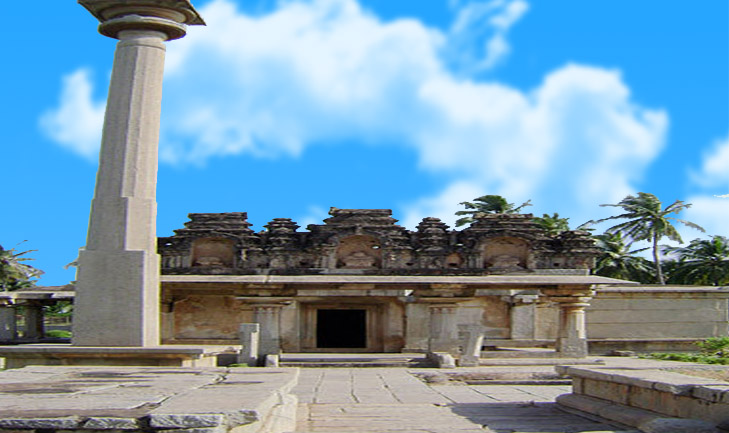Ganagitti Kunthunatha Jain Tirth
 |
Hampi Beauty In Simplicity
Ganagitti Tirth in Hampi is a Jain Tirth. It is located on the Kampli Road on the way to Bhima’s Gate. This lovely Tirth is one of the simple stone structures in Hampi.
The Tirth is one of the earliest structures constructed during the reign of the Vijayanagara Empire. It is one of the notable temples in the ancient village and is visited by a large number of tourists on their Hampi trail.
History of Temple : The Ganagitti Tirth was built by Iruguppa (also known as Iruga), the Minister of Bukkarāya II, during the reign of the Vijayanagara king Harihara II. It was consecrated in the year 1386 AD.
The temple is dedicated to Kunthunatha, the 17th Thirthankara of the Jaina faith. The tirth is also known as Kunthunatha Jaina Temple. It is one of the main Jain or Jina temples built during the reign of the Vijayanagara Empire in Hampi. The temple is also known by other names such as ‘The Oil-Woman Temple’ and the Ganigitti Tirth.
Architecture : The Ganagitti Tirth is a lovely structure with a simple form and design. Though the temple is built in the Vijayanagara style of architecture, it has some design elements that are derived from the temples of the late Chalukya era. Jain temples are normally very simple in architecture. The Ganagitti Temple follows the same principle in terms of simplicity. The temple has two halls and an inner sanctum. The two halls are called the Antarala Ardha Mantapa and Maha Mantapa and the inner sanctum is the Garbha Griha of the temple.
The Ganagitti temple once had an idol. Though the idol is no longer there, the stone pedestal on which the idol once stood can still be found there. The temple also has foot marks on the platforms built inside it. These foot marks are believed to be of Thirthankara. The temple has several Jain sculptures that can be found in various parts of the structure. The superstructure of this temple in Hampi is made of stone. The superstructure is built in the form of a stepped pyramid that has six diminishing talas of plain horizontal slabs. A huge Mana-Stambha or column stands near the portico of the temple. An inscription found on the column states the name of Iruguppa as the person who constructed the temple during the reign of Harihara II.
 |
Additional details for this page requested from Readers
Page Sponsorship also welcome from Readers.
-------------------------------------------
Mail to : Ahimsa Foundation
www.jainsamaj.org
R17122014